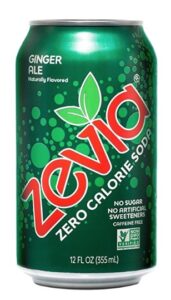My new favorite evening drink. A sparkling refreshing blend of kombucha, beet root juice, ginger ale and Zevia. The perfect winter drink. You can also try adding pomegranate or cranberry juice if desire.
A short post as I wasn’t able to track down affirmation regarding the remarkable statement below about Type II diabetes development and the microbiota or the mechanism through which kombucha affects or alleviates dysfunctional glucose metabolism aside from a pancreatic and/or liver protective effect, however there is some evidence regarding hormone regulation. I hope you’ll find the sources helpful and interesting regarding the health benefits of kombucha.
If you can find kombucha fermented from green tea that would probably be a better option than from black however most studies are done with black tea kombucha. Black tea has a high fluoride content. Fluoride is a neuro toxin.

Go from sparkling to serious for a winter morning boost by adding orange juice or grapefruit juice. You’ll be happy to learn that kombucha is a good source of B vitamins and vitamin C.
Sparkling Beet Root Kombucha
- 4 oz. kombucha
- 4 oz. beet root juice
- 4 oz. Zevia Ginger Ale (or your flavor choice).
Combine the above ingredients and pour over ice.
This sparkling drink packs a healthy punch to start your New Year. Read more here…
In addition you can read more about the benefits of kombucha below and in sources.

Although the pathogenesis of T2DM is still not fully understood, gut microbiota dysbiosis is thought to be closely related to its development. Many studies have found that gut microbiota affected the pathological status and physiological functions of the host through various manners. It was shown that gut microbiota participated in the development of T2DM through three pathways, including the short-chain fatty acid pathway, endotoxin pathway and bile acid pathway. For the endotoxin pathway, the disordered gut microbiota, including the increase in gram-negative bacteria or pathogenic bacteria, and the decrease in beneficial bacteria, would damage the intestinal mucosal barrier by increasing the content of intestinal lipopolysaccharides (LPS). Consequently, low-level inflammation caused by the damaged mucosal barrier will lead to damage of islet β cells, as well as systemic insulin resistance . The short-chain fatty acids (SCFAs), which are continuously synthesized by some typical probiotics in the intestinal tract, could activate the intestinal L cells to secrete gastrointestinal hormones (i.e., GLP-1 or PYY) [12]. GLP-1 and PYY could regulate glucose metabolism and energy balance in the host. However, the high-fat, high-sugar diet (HFHSD) could disturb the balance of the gut microbiota, thereby blocking the production of SCFAs and eventually causing T2DM.
At present, long-term medication and intervention are needed to manage T2DM. Therefore, natural anti-diabetic functional foods may be a necessary supplementary intervention strategy. An increasing number of studies have shown that fermented functional beverages, such as kombucha, kefir, and enzymes, have anti-diabetic effects. Kombucha is a traditional fermented tea drink with a long history.
.
Alternavita: All you need to know (critical info in a nutshell)..... by focusing exclusively on these foundational health and immune development issues up to 90% of chronic conditions can be eliminated.
WHO STATEMENTS: 2017 Millennium Goal
- Breastfeeding,
- food (security)
- and water security (sanitation)
are major protective factors against malnutrition and critical factors in the maturation of healthy gut microbiota, characterized by a transient bifidobacterial bloom before a global rise in anaerobes. Early depletion in gut Bifidobacterium longum, a typical maternal probiotic, known to inhibit pathogens, represents the first step in gut microbiota alteration associated with severe acute malnutrition (SAM). Later, the absence of the Healthy Mature Anaerobic Gut Microbiota (HMAGM) leads to deficient energy harvest, vitamin biosynthesis and immune protection, and is associated with diarrhea, malabsorption and systemic invasion by microbial pathogens. A therapeutic diet and infection treatment may be unable to restore bifidobacteria and HMAGM.
Researchers found that malnourished children’s microbiota failed to follow the healthy pattern they identified in healthy children. The microbiota of malnourished children is immature, lagging in development behind that of their healthy peers. Supplementing these children’s meals with widely used therapeutic foods that increase calories and nutrient density reduces deaths from malnutrition, but it does not fix their persistent microbiota immaturity.
“Perhaps more insidious than slowing growth is malnutrition’s effect on less visible aspects of health, including impaired brain development and dysfunctional immunity, which follow these children throughout their lives”.
The Father of The Microbiome
Dr. Jeffrey Gordon
SIBO
SIBO can cause severe malabsorption, serious malnutrition and immune deficiency syndromes in children (non breastfed) and adults.
Prognosis is usually serious, determined mostly by the underlying disease that led to SIBO.
Immunizations
The WHO recommends that immunization or treatment be orally administered due to economic, logistical and security reasons. Furthermore, this route offers important advantages over systemic administration, such as reducing side effects, as the molecules are administered locally and have the ability to stimulate the GALT immune responses (Levine and Dougan, 1998; Neutra and Kozlowski, 2006; Bermúdez-Humarán et al., 2011).
Infections
For ANY infectious or parasitic disease to start, it is ALWAYS a requisite that the host suffer IMMUNODEFICIENCY. At the same time, infectious and parasitic diseases themselves cause additional IMMUNE SUPPRESSION and more MALNUTRITION. This immune suppression is SECONDARY to the accumulation of free radicals, especially oxidizing species, that occurs during and after infectious and parasitic diseases.
Clinical Aspects of Immunology and Biochem J.
Current IBD Research 2016
Currently available treatments for IBD, which target the systemic immune system, induce immunosuppression, thereby exposing the patient to the risk of infections and malignancy. The interplay between the gut and the systemic immune system determines the final effect on target organs, including the bowel mucosa. Inflammatory bowel diseases (IBD) are associated with an altered systemic immune response leading to inflammation-mediated damage to the gut and other organs.
Clinical & Translational Immunology (2016)
Gastroenterology and Liver Units, Department of Medicine, Hebrew University-Hadassah Medical Center, Jerusalem, Israel
Most importantly, the immune modulatory agents used today for IBD do not achieve remission in many patients.
Not all IBD patients benefit from currently available drugs. Young people with IBD do not want to be on long-term drug therapy. Oral immune therapy, while not yet studied in large cohorts of patients, may provide an answer to this unmet need.
Clinical & Translational Immunology (2016)
Gastroenterology and Liver Units, Department of Medicine, Hebrew University-Hadassah Medical Center, Jerusalem, Israel
Tolerance
Tolerance is the ability of the immune system to ‘see’ and respond appropriately. Without galactose (a necessary sugar) the immune system can not 'see'. Your immune system would not be able to function without galactose Your body wouldn’t know which cells are
“good” and what cells are “bad.” Your body wouldn’t know who the invaders were and which ones should be attacked by antibodies. As you will learn the importance of these ‘sugars’ in gut microbiota health is a rapidly expanding field of research, only recently
discovered, including HMO's (human milk oligosaccharides).
Why galactose?
Milk sugar aka lactose has been shown to be very beneficial for the human body though unlike sucrose, lactose is made up of glucose and galactose. There is no fructose in lactose. It is a healthy disaccharide sugar. Galactose is known as the “brain sugar” and supports brain development of babies and children. Galactose helps triggers long-term memory formation. Galactose has been shown to inhibit tumor growth and stop its spread, particularly to the liver. This beneficial sugar can also enhance wound healing, decrease inflammation, enhances cellular communication, and increases calcium absorption.
What does immune ‘tolerance’ mean in simple language?
Immune tolerance, or immunological tolerance, or immunotolerance, is a state of unresponsiveness of the immune system to
substances or tissue that have the capacity to elicit an immune response in a given organism. The Th1 cytokine profile is vital for clearance of certain organisms and ancillary immune activity, and a limiting effect on this cytokine profile may result in reduced chances for overcoming infections especially intra-cellular organisms residing within macrophages.
Effective clearance will depend on appropriate macrophage activation (which occurs through IFN≥ release by Th1 and NK cells) and production of nitric oxide. If this pathway is disrupted IFN≥ secretion is blocked, impairing macrophage activation.
Persistent blockade of these inhibitory receptors has lead to the breakdown in immune self tolerance, thereby increasing susceptibility to autoimmune or auto-inflammatory side effects, including rash, colitis, hepatitis and endocrinopathies.
Many drugs may cause checkpoint blockade toxicity including pharmaceutical drugs termed ‘immuno therapy’ by pharmaceutical companies, these include Mab drugs and cancer treatments.
Checkpoint Inhibitor–Induced Colitis: A New Type of Inflammatory Bowel Disease?
Madeline Bertha, MD MS, corresponding author1 Emanuelle Bellaguara, MD, Timothy Kuzel, MD, and Stephen Hanauer, MD
ACG Case Rep J. 2017; 4: e112.
Published online 2017 Oct 11. doi: 10.14309/crj.2017.112
PMCID: PMC5636906
PMID: 29043290
The Elderly
Mammal milk is required for enhanced phagocytosis as shown by research, especially in the elderly. Whole fat mammal milk can actually restore phagocytosis in senescent cells in the elderly. Phagocytosis, by which immune cells ‘eat’ bacteria or infected cells, is one of the mechanisms that help to resist infections. Lactic acid bacteria strains like acidophilus also increases phagocytosis.